IDEAS FOR A BUG OUT BAG
By Rick Fulton , (Part 1 of a 2 part series)
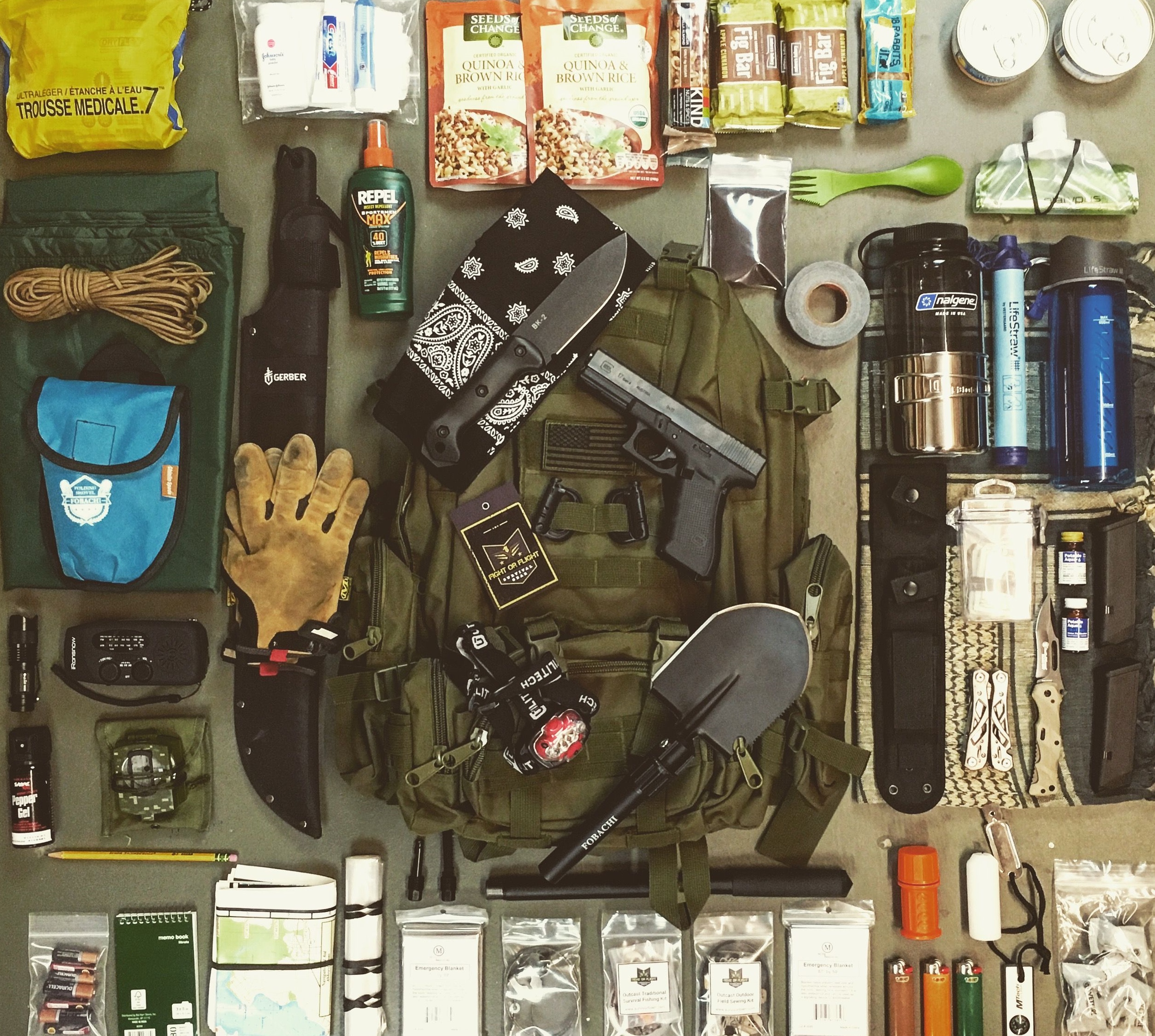
A bug out bag in the car trunk or bedroom closet is a first priority kind of grab and go kit, for immediate use the first two days of a disaster, and then as a building block for a longer period, if needed.
What should be in a bug out bag? The very first item is an inventory list inside, right on top. You immediately know what you have to work with.
Be the injury major or minor, you need a first aid kit in a plastic box which is sufficient to the needs of addressing anything that is immediately life-threatening. Commercially available kits may need to be somewhat supplemented with additional triangular bandages, a thorough first aid handbook and a large nail clipper
Disposable space blankets -- Small flashlight with extra batteries -- Zip lock bags
Sealed food bars -- Plastic ponchos -- Gel type ballpoint pens and small notebook
Extra money -- Wire saw (good for creating small pile of tender to light fires)
Multi tool -- Fire starter, plus lighter or storm proof matches kept in a plastic container
100 foot of para cord -- Blue plastic tarp for shelter -- Required daily medications
Survival whistle -- Life Straw water filter to drink from puddles (be careful with this)
Roll of duct tape -- Plastic trash sacks (Many purposes shelter or ground cloth)
Cell phone/charger -- Portable radio -- Compass -- Emergency blankets (disposable)
Soap/Sanitizing wipes -- Playing cards -- Folding shovel -- Collapsible hiking pole
Photo identification card for each person. Taped to it is a piece of paper, should be laminated, which has blood type and next of kin information, plus the home address.
A plastic bottle or container for fire lighting items such as disposable lighters or matches which can double as water bottle.
A firearm? Very much a personal choice, as long as you are familiar and comfortable with being armed. With modern ammunition now available, even a .22 caliber pistol can be adequate for snakes, protection against dogs and other similar-sized wildlife, and for signaling. There is room in the bag for fifty or more shells, plus what is in the loaded weapon. Keep the gun in a belt holster, and don't take it out unless it is for a last resort situation.
All these things fit in a day pack. Packs come in a variety of sizes and prices, but are generally inexpensive. Check and make sure you can carry it on your back. The situation might require you to make a hike. Remember, not everything goes inside the bag. A rolled tarp can be tied to the handle, and most bags have places for water bottles.
This list is intended as a starting point for a bug out bag, concerning what fits best for your local circumstances. You can certainly add as you believe is warranted, but just remember weight, and also remember this is intended to keep you and your family or group going for just a couple days. After that, there will be help coming to you.
Final point: Always know where the bug out bag is stored, and every now and then, use the inventory list, and give it a quick check. If you need it, above all else, keep the faith.
EDITOR'S NOTE: The author, an AFSFA member, was part of the Hurricane Katrina recovery mission in southern Mississippi for five months, immediately after the storm came ashore.
An Air Force first — a Sikh in beard and turban graduates at Lackland
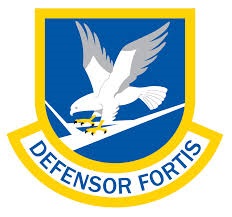 Airman 1st Class Sunjit Singh Rathour stood out in the crowd as he graduated Thursday from Security Forces training at Joint Base San Antonio-Lackland.
Airman 1st Class Sunjit Singh Rathour stood out in the crowd as he graduated Thursday from Security Forces training at Joint Base San Antonio-Lackland.
It was inevitable, given that he was the only airman in Team 36 wearing a beard and a turban as he crossed the stage.
“To be honest, it went in the blink of an eye,” he told reporters. “It felt amazing.”
To read more: https://www.expressnews.com/news/local/article/An-Air-Force-first-a-Sikh-in-beard-and-turban-14471785.php
Front Range Chapter Carries the Torch for Special Olympics Colorado Summer Classic
By CMSgt (ret) Joseph “Mitch” Mitchell, Front Range Chapter Chairman

No, this wasn’t the first time Security Police or Security Forces ever participated in a Special Olympics Law Enforcement Torch Run (LETR). And, it was far from a first-time LETR event for Special Olympics Colorado involving members of the U.S. Air Force. But, here’s what made this event unprecedented; August 24, 2019 marked the first-ever Law Enforcement Torch Run sponsored solely – as well as organized, by the Air Force Security Forces Association.
Late last year, AFSFA became an Affiliate with the Law Enforcement Torch Run/Special Olympics International (see article in Jan-Mar 2019 issue). And, it was a very proud occasion when only a short time later the Front Range Chapter was presented with the opportunity to help organize an event with Special Olympics Colorado.
The pride of each one of the torch bearers was visibly evident on their faces – especially after completing their long early morning run. AFSFA Executive Director John Probst was on hand driving a support van and later related: “Air Force Security Forces Association, the professional association for all Air Force Security Forces – Active Duty, Guard and Reserve, is proud to be a partner with the Law Enforcement Torch Run for Special Olympics.” And, the performance by our torch running Security Forces set high expectations for future LETR events.
LETR was started by Wichita, Kansas Police Chief Richard LaMunyon in 1981. Today, nearly 110,000 law enforcement members carry the “Flame of Hope” annually. The flame symbolizes courage and celebration of diversity uniting communities around the world. Today the LETR has become the Special Olympics’ largest public awareness and fundraising group for athletes and people with intellectual disabilities.
Several Front Range Security Forces Defenders expressed their own perspectives on being a part of this movement that is making huge improvements in the lives of some amazing people. Brittinie Alvarez from 50th SFS at Schriever AFB, expressed her feelings this way: “From the start, you could see all of the SF runners ready – the first bit was an easy run. Then the gradual incline and it was a bit tougher. We weren’t running for ourselves though, we had a purpose. And when we were joined by the athletes, it was very sweet.” And, it was apparent that the Special Olympians and their families and friends were positively affected by the sharp formation of Security Forces members delivering the “Flame of Hope.”
Susan Foege, Special Olympics Colorado, commented about the torch runners and their impact on the opening ceremonies, “The excitement in the crowd grew as we announced and saw the arrival of the torch and your group. Watching and hearing the group call military cadence as they came towards the cauldron drew a huge round of applause. Then, as the torch was handed off to the athletes, your group filled in to provide them with support and cheer them on.” She went on to express how much our Security Forces torch runners added to the excitement, energy and support to the Summer Classic. From her perspective as Director of Competition, “The torch run and lighting of the cauldron is one of the most spectacular parts of our Opening Ceremonies.”
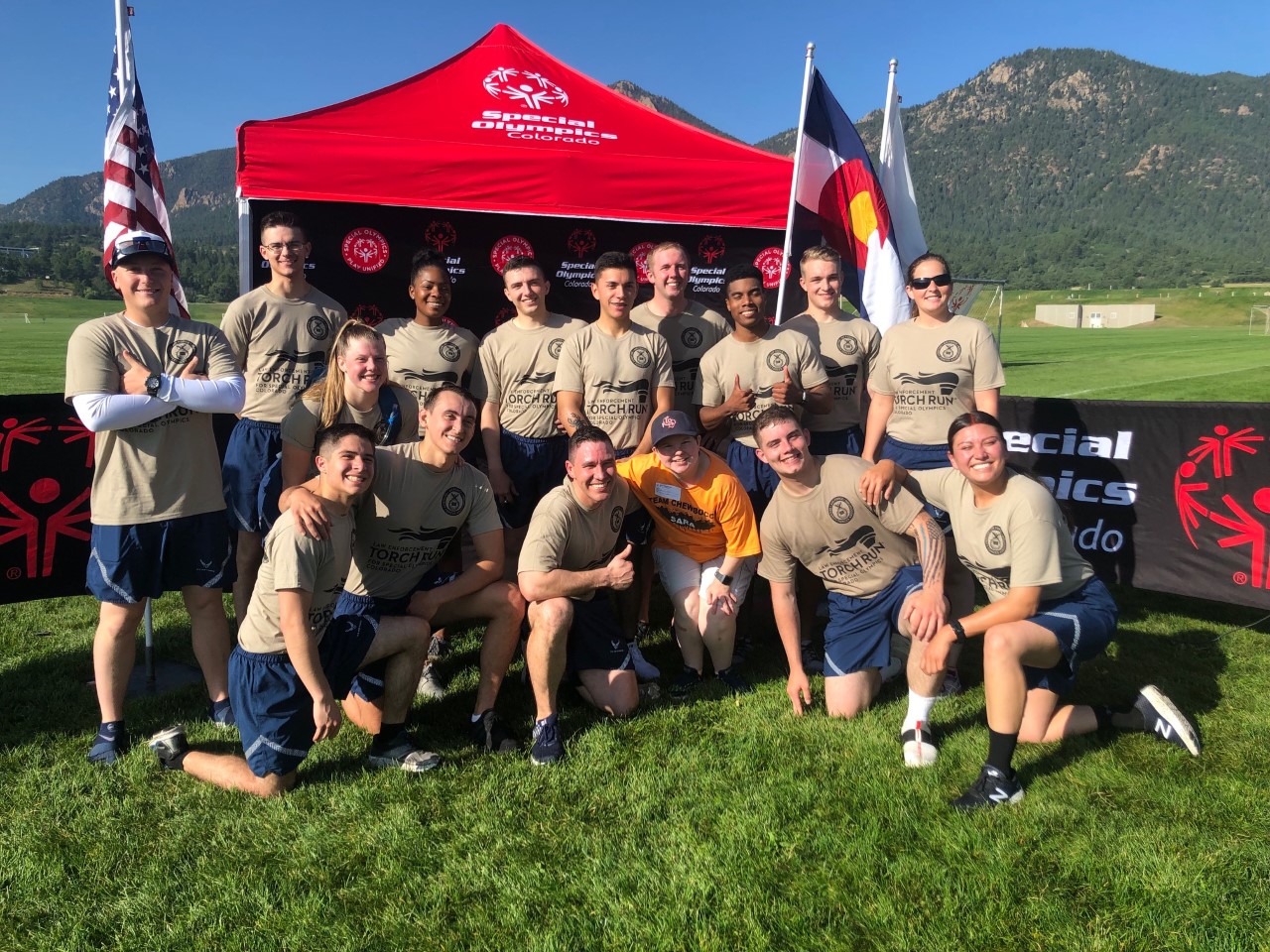 Another aspect that made this such a special LETR was the level of involvement, cooperation and overall support the event received. Starting with the AFSFA National Headquarters, site host USAF Academy athletic staff, as well as the individual runners and the units they represented – all combined for successful execution of the challenging feat. The AFSFA Front Range Chapter, along with Security Forces members from Peterson AFB, USAF Academy, and Schriever AFB – as well as all the way from Buckley AFB came together to make the first AFSFA sponsored Law Enforcement Torch Run a big success.
Another aspect that made this such a special LETR was the level of involvement, cooperation and overall support the event received. Starting with the AFSFA National Headquarters, site host USAF Academy athletic staff, as well as the individual runners and the units they represented – all combined for successful execution of the challenging feat. The AFSFA Front Range Chapter, along with Security Forces members from Peterson AFB, USAF Academy, and Schriever AFB – as well as all the way from Buckley AFB came together to make the first AFSFA sponsored Law Enforcement Torch Run a big success.
But, be assured this is only the beginning of a wonderfully promising partnership between the Law Enforcement Torch Run/Special Olympics International and AFSFA. Special Olympics Colorado has already asked the Front Range Chapter to work with them at their 2020 Summer Classic.
And, when you get the chance to participate in a LETR, or other Special Olympics activities, do not pass up the opportunity. The experience may just make a difference in your life as well.
First Female Airman Graduates Army's Ranger School
Travis AFB, CA -- 30 August 2019
Story by TSgt Liliana Moreno, 621st Contingency Response Wing Public Affairs
U.S. Air Force 1st Lt. Chelsey Hibsch made history by becoming the first female in the U.S. Air Force to graduate from the U.S. Army’s Ranger School Aug. 30 at Fort Benning, Georgia.
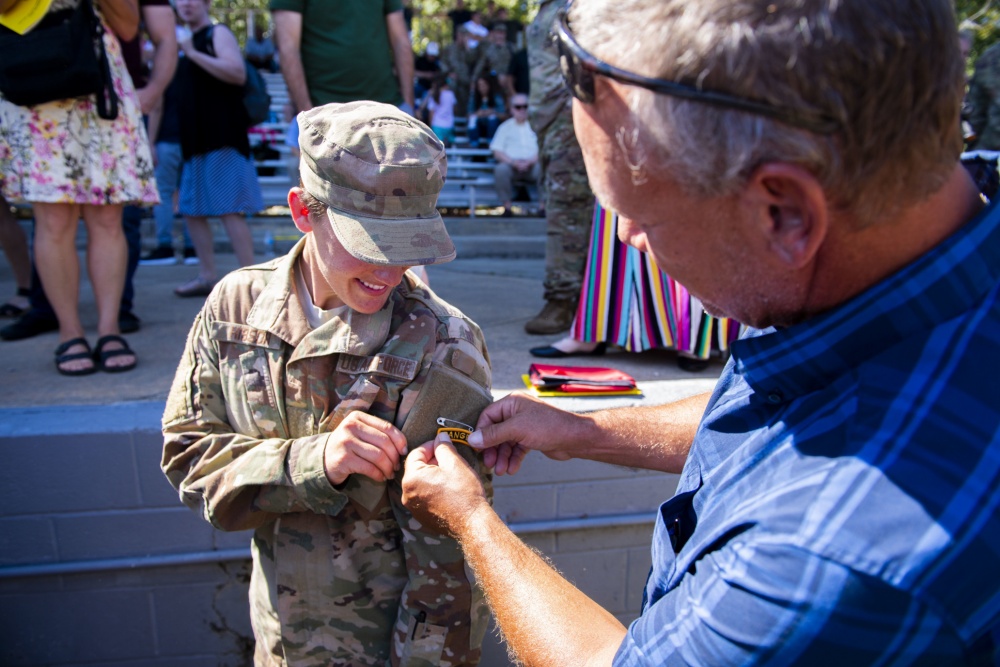
First Lt. Chelsey Hibsch, 821st Contingency Response Squadron, receives her Ranger tab after graduating from the U.S. Army Ranger School Aug. 30, 2019, at Fort Benning, Georgia. Hibsch became the first Air Force female in history to graduate the two-month course. (U.S. Army photo by John Tongret)
Hibsch is a security forces officer assigned to the 821st Contingency Response Squadron at Travis Air Force Base, California.
Becoming a Ranger is no easy task. The two-month grueling course is designed to train military members on small unit tactics and instill combat leadership skills that empower members to make quick decisions in adverse situations.
“Lt. Hibsch represents the very best of our Air Force and Air Mobility Command – determined, innovative, and capable of breaking barriers,” said Col. Doug Jackson, 621st Contingency Response Wing commander. “Moreover, as evidenced by her completion of this rigorous training, she exhibits steadfast commitment to joint teams and partnerships. The entire 621st Contingency Response Wing is proud of Chelsey and her remarkable accomplishment.”
Hibsch is no stranger to grueling competitions. Last year alone her Pacific Air Forces security forces team won the Advanced Combat Skills Assessment competition and took home the 2018 Air Force Defender Challenge title.
“These are the key tasks and skills we need to have confidence in as security forces members,” Hibsch said during an interview for the ACSA competition. “You’re going to fall back on the level of your training and this just goes to show how good our squadron’s been about training.”
Her dedication, teamwork and Airmanship pushed her to compete in the Ranger Assessment Course at Camp Bullis, Texas, which ultimately led her to enroll in the U.S. Army Ranger School.
According to the U.S. Army’s Maneuver Center of Excellence, there are three distinct phases of Ranger School, called the Benning, Mountain and Swamp, which follow the crawl, walk and run training methodology.
In the Benning phase, students are assessed for physical stamina and mental toughness. It also establishes the tactical fundamentals required to become trained on squad operations and focus on ambush and recon missions, patrol base operations, and planning before moving on to platoon operations.
During Mountain phase, students receive instruction on military mountaineering tasks as well as techniques for employing squads and platoons for continuous combat patrol operation in a mountainous environment. The rugged terrain, severe weather, hunger, mental and physical fatigue and the emotional stress that students encounter afford them the opportunity to gauge their capabilities and limitations as well as those of their Ranger buddies.
Lastly, the Swamp phase continues to develop the students’ ability to lead small units on airborne, air assault, small boat, ship-to-shore, and dismounted combat patrol operations in a low intensity combat environment against opposing forces.
Hibsch is now one of the few elite females in the military who get to wear the coveted Ranger tab.
Capt. Alex Covey, 921st Contingency Response Squadron Defense Force commander, praised Hibsch for successfully completing Ranger School and said she will be a significant and positive addition, not only for the squadron, but for the Wing as a whole.
“The firsthand knowledge and tactical experience she is bringing back to her squadron will improve the way Security Forces develops and executes integrated base defense in support of Air Base Openings and Joint Task Force-Port Opening contingency operations,” Covey said. “I believe that Lt Hibsch’s specific training will bring both 821st and 921st Defenders to new heights as we continue to forward posture to deter and defeat future threats involving Contingency Response Airmen.”
Lt. Col. Christina Lee, 821st Contingency Response Squadron commander recognizes the historical milestone Hibsch has achieved as the first Air Force female to graduate Ranger School.
“This is a big moment for Lt Hibsch and her family,” said Lee. “Graduating Ranger School is an accomplishment that stands on its own. In Chelsey’s case, there’s more to the story that we should be unabashed about celebrating. Her place in history as the first Air Force female to graduate marks a positive culture change. She paves the way for what I know will be many more ahead. Our Squadron slogan is “Lead the Rest.” She lives those words in a way that makes all of us humble and proud. We look forward to having her home and back with her team of Contingency Response Airmen.”
“Hey dude, are you okay?”
FighterLine, 301st Fighter Wing PA, NAS Fort Worth, JRB, TX, April 2019
By Col. Mitchell Hanson, 301 FW/CC
Commander’s Corner
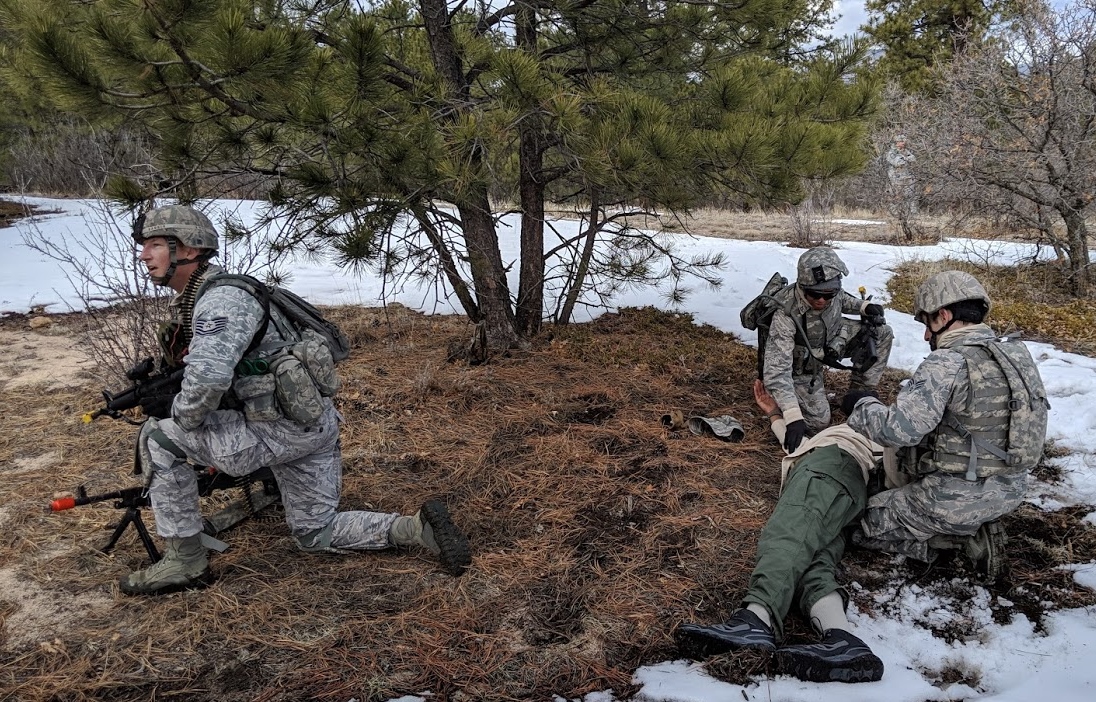 Chief Safley and I visited our security forces squadron at the U.S. Air Force Academy two weeks ago while they were conducting their annual tour training. The facilities were great, the backdrop was amazing and the training they accomplished was super. In two weeks, our SFS was able to complete training that would have taken 18 months to normally complete. They endured long days, austere field conditions, cold temperatures, snow, sleep deprivation, long briefs and debriefs, lots of critiques, and physical stress. Yet I still saw smiles on their faces, determination in their actions and motivation to get better. These are a group of men and women that will be defending our bases, kicking down doors, searching villages, rescuing airmen and will definitely be in harm’s way, we owe them a lot of gratitude.
Chief Safley and I visited our security forces squadron at the U.S. Air Force Academy two weeks ago while they were conducting their annual tour training. The facilities were great, the backdrop was amazing and the training they accomplished was super. In two weeks, our SFS was able to complete training that would have taken 18 months to normally complete. They endured long days, austere field conditions, cold temperatures, snow, sleep deprivation, long briefs and debriefs, lots of critiques, and physical stress. Yet I still saw smiles on their faces, determination in their actions and motivation to get better. These are a group of men and women that will be defending our bases, kicking down doors, searching villages, rescuing airmen and will definitely be in harm’s way, we owe them a lot of gratitude.
On the day we visited, three fire teams departed their forward operating base with a plan to travel to an “objective” where they would encounter enemy forces (played by other SFS members). After they had begun this particular operation, their cadre injected a new mission--to rescue two pilots whose helicopter had crashed. I was asked to play one of the downed pilots along with SSgt Villanueva (“V-10”). We were dropped off at a site with the real wreckage of a UH-1 “Huey” helicopter, pretty realistic training in my opinion. As V-10 and I waited for the fire teams to find us, we hunkered down in the wreckage knowing that the enemy forces were also nearby and pretending to be injured. As the friendly fire teams approached, chaos ensued. We were surrounded by small and heavy machine gun fire, small arms fire, and smoke… all accompanied by lots of yelling and screaming. As all of this was going on, over my right shoulder someone starting yelling, “Hey dude, are you okay?” At first I didn’t realize he was yelling at me until the third or fourth time hearing it. When I finally realized it was me he was yelling at, I chuckled to myself at the thought of being called “dude” and answered back, “No, we’re hurt and need assistance.” We were eventually rescued and taken back into friendly territory, which marked the successful conclusion of that day’s exercise.
As I was walking back to the camp, I started thinking about what a great experience it was to be with our SFS and the “Hey dude, are you okay?” security forces member. Granted this was only training, but in a real world situation, he would have done the same thing--risk his life for mine. Not because of who I am or the rank I hold, but because I’m a fellow airmen who was in harm’s way. Think about that for a moment. Someone who doesn’t even know me is willing to risk their life for mine. Two of our core values-- Service before self and Excellence in all we do--could not have been more prevalent in that situation. The way that security forces watch out for one another is imperative to their mission; they must watch each other’s back, 24/7, in all conditions or the results could be catastrophic. This is the mindset that everyone in the 301st Fighter Wing should have--to look out for one another and have each other’s back. When a friend, a family member or a co-worker needs your help, you have to drop everything and render assistance. We are always fighting a battle; whether it’s in public or in private, at home, at work or on the battlefield. Watch each other’s back, take care of your co-worker, keep an eye out for one another and don’t forget to ask….”Hey dude, are you okay?”
Col. H
Page 21 of 50


